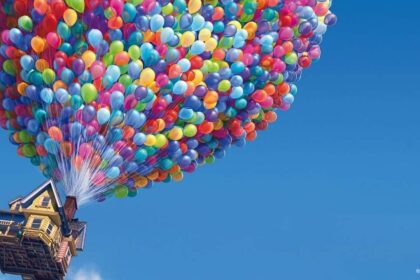Most everyone who follows the movie business knows that between 1984 and 1994 the Walt Disney Co. relaunched its animation business and rode the success of movies such as “The Lion King” and “Beauty and the Beast” to establish a creative and financial monopoly.
The Telluride Film Festival documentary “Waking Sleeping Beauty” offers an insiders’ account not only of the soup-to-nuts animation overhaul, but also the private battles — most famously, between Michael Eisner and Jeffrey Katzenberg — that led to the dream team’s breakup and the end of Disney animation’s domination.
While can’t-miss Pixar Animation Studios is clearly the prevailing creative and commercial leader in animation these days, what Disney accomplished in that 10-year span is perhaps even more remarkable, particularly given the division’s preceding slump.
As “Waking Sleeping Beauty” reminds us, just as Eisner and Katzenberg were joining Disney to turn the ailing studio around, Disney’s animated “The Black Cauldron” was beaten at the box office by “The Care Bears Movie.” As badly as the Disney animated films were performing, morale inside the unit was possibly even worse — there was little leadership, and the animators were eventually kicked off Disney’s Burbank lot, to shabby offices in Glendale.
Katzenberg was up for the challenge, and pushed the animators harder than they’d ever been driven — calling staff meetings before the sun was up, and insisting that filmmakers work weekends. Despite (or perhaps because of) his incessant prodding, the studio rather quickly turned itself around.
But the professional and personal price was high: Katzenberg, who ran the studio; Eisner, Disney’s chairman; and vice-chairman Roy Disney all clashed, particularly over who deserved (and claimed) credit for the turnaround. When Disney president Frank Wells died in 1994, the studio lost its peacekeeper, and the internal squabbling soon boiled over. Before long, Katzenberg would help form DreamWorks, which helped topple Disney off the animation mountaintop.
“Waking Sleeping Beauty” was made by Don Hahn and Peter Schneider, who are scarcely anthropologists stumbling across an interesting uprising. Hahn, who directed and produced the film, produced “Beauty and the Beast” and “The Lion King,” while Schneider, who produced the movie, was the animation president during its resurrection. The documentary also was financed and will be distributed by Disney next April.
The filmmakers insist — and the resulting movie proves — that they didn’t tread lightly. There’s a scene in “Waking Sleeping Beauty” where you find out that Katzenberg wanted to kill the signature song, “Part of Your World,” from “The Little Mermaid.”
One animator calls Katzenberg a “maniac” (maybe he’ll consider it a compliment), Schneider lashes out at the staff over a spoof memo, animators consider “The Lion King” a potential flop, Eisner says he “didn’t care about credit” (far less believable than a singing Jamaican crab) and the original concept for “Beauty and the Beast” didn’t include songs.
If there’s one thing that broke the company apart, the movie suggests, it’s that they succeeded too well.
“We were hyper aware of not making a puff piece,” Hahn says. Adds Schneider: “And we don’t think it is.” SOURCE: John Horn






